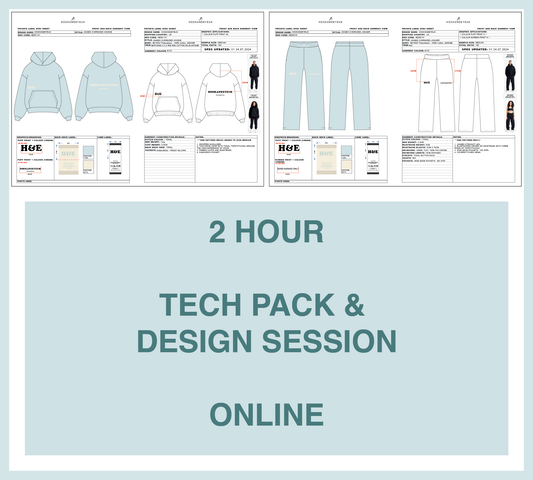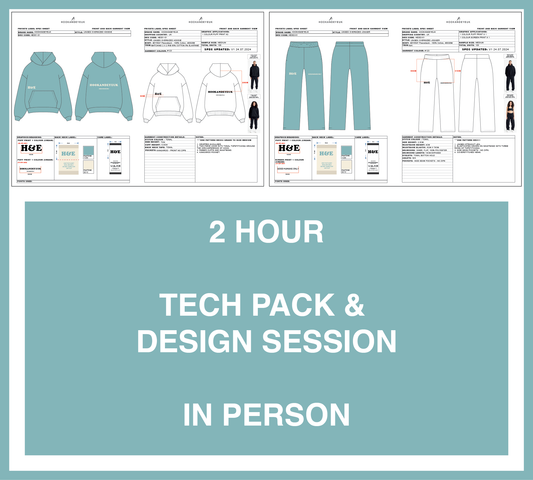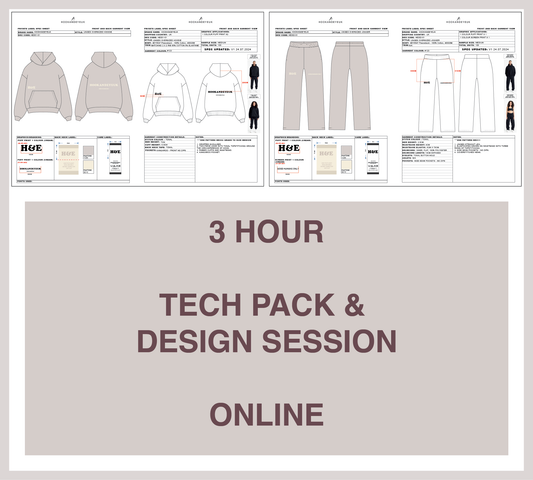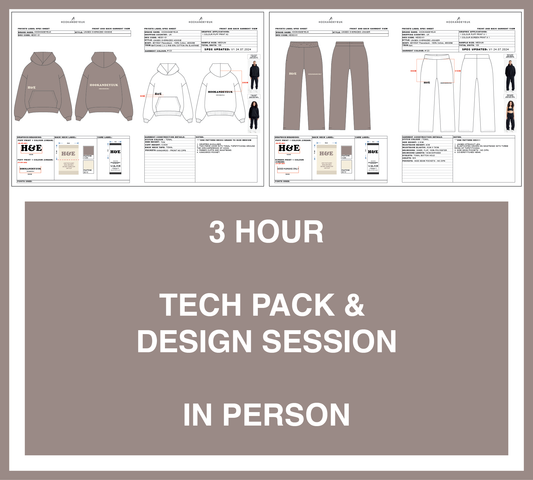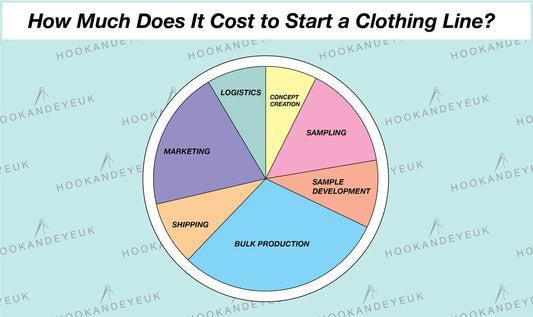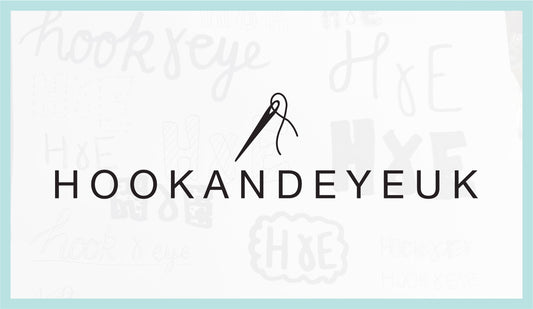Picking the right fabric for your clothing design has the same importance as choosing the foundation for a building – if you get it wrong, the whole project might fall apart. Whether you're an experienced designer or you're just beginning your fashion journey, choosing the proper fabric is one of the most important decisions you'll make when designing garments. The right fabric can make your design stand out, while the wrong choice can turn even the most beautiful concept into something people can't wear.
At Hook and Eye UK, we've helped many designers pick fabrics, and we've seen how this choice has an impact on everything from how they can make their products to how well those products do in stores. This guide will walk you through the essential considerations for choosing fabrics that not only look beautiful but perform exactly as needed for your specific design requirements.
Understanding Different Fabric Types for Your Designs
Before we get into the specifics of how to choose, it's good to know the basic types of fabric you can use. There are hundreds of fabrics out there, and each one has its own special qualities that make it good for different things. Fabrics fall into two main groups:
Natural Fabrics
Natural fabrics come from plant or animal sources and include:
● Cotton: This fabric is breathable, soft, and can be used for many purposes. It's great for the clothes you wear every day. You can find cotton in different thicknesses, from thin voile to thick denim.
● Linen: Known for exceptional breathability and a distinctive texture, linen is perfect for warm-weather garments but wrinkles easily.
● Wool: Excellent for insulation and structure, wool comes in many varieties from fine merino to sturdy tweed.
● Silk: Luxurious with a beautiful drape, silk offers a smooth texture and natural sheen but requires delicate care.
Synthetic and Blended Fabrics
Synthetic fabrics are manufactured from chemical compounds, while blends combine natural and synthetic fibres:
● Polyester: Durable, wrinkle-resistant, and often less expensive than natural alternatives.
● Nylon: Strong, lightweight, and quick-drying, making it ideal for activewear and outerwear.
● Spandex/Elastane: Provides stretch and recovery, usually blended with other fibres.
● Blends (like poly-cotton): Combine the benefits of multiple fibre types to achieve specific performance characteristics.
Knowing the differences between fabric types will help you make better design decisions. Each category has distinct advantages and limitations that directly impact how your garment will look, feel, and perform.

Essential Fabric Properties to Consider
The fabric selection process requires consideration of multiple factors including look, feel and function. Key fabric properties include weight, stretch, drape, texture, and care requirements. Let’s explore these properties in detail:
Weight
Fabric weight, typically measured in GSM (grams per square meter), determines how heavy or light a garment will be:
● Lightweight fabrics (under 150 GSM): Suitable for linings, delicate blouses, and summer garments
● Medium-weight fabrics (150-300 GSM): Ideal for shirts, dresses, and most everyday wear
● Heavyweight fabrics (over 300 GSM): Best for outerwear, structured garments, and winter clothing
The weight has an impact on not just how the clothing feels when someone puts it on, but also how it falls on the body and what construction techniques are appropriate.
Stretch and Recovery
Stretch means how much you can pull a fabric, while recovery shows how well it bounces back to its first shape:
● Woven fabrics: Generally have minimal stretch unless blended with elastane or cut on the bias
● Knit fabrics: Naturally stretchy due to their construction
● Performance stretch: Specially engineered for activities requiring movement
To test a fabric's stretch, pull it in different ways. This will give you useful info about how it will work in a piece of clothing.
Drape
The drape is how the fabric falls or hangs. Fabrics that drape well fit the body's shape and create flowing lines:
● Fabrics with excellent drape: Silk charmeuse, rayon, fine jersey
● Fabrics with structured drape: Denim, canvas, heavy linen
To check the drape, lift the fabric and watch how it falls, or put it over a form to see how it acts in three dimensions.
Texture and Hand Feel
The texture affects both appearance and comfort:
● Smooth textures: Often perceived as luxurious or refined
● Textured fabrics: Add visual interest and can hide imperfections
● Hand feel: How the fabric feels when touched (soft, crisp, slick, etc.)
Keep in mind that washing can change how fabric feels so always try out samples before buying large amounts.
When you check fabric qualities, do it in an organized way using both technical details and hands-on testing.
Different fabric properties become important depending on the specific garment you’re designing.
Practical Fabric Sourcing Tips for Designers
Finding the right fabric is just the first step—you also need to know where and how to get it. Here are some useful fabric-sourcing tips:
Finding Fabric Suppliers
● Trade shows: Events like Premiere Vision and Texworld showcase the latest fabrics
● Wholesale districts: Many cities have textile districts where you can see and feel fabrics in person
● Online marketplaces: Platforms like Alibaba and Digifair connect designers with manufacturers
● Specialized suppliers: Some suppliers focus on specific types of fabrics or sustainable options
Requesting and Evaluating Samples
Always request samples before placing large orders:
● Order swatches of potential fabrics
● Test for shrinkage, colourfastness, pilling
● Make a small prototype if possible
● Consider how the fabric will work with your production methods
The Shopping Method
As mentioned in our top tip: The easiest thing to do is go shopping and find items that fit you well with the fabric you like. Then, you can show this fabric to your designer, and they can guide you to a similar fabric.
This approach has several advantages:
● You can feel how the fabric performs in a finished garment
● You can see how it drapes on a body
● You’ll know how it feels after washing and wearing
● It provides a concrete reference point for communication with your designer or supplier
The process of choosing the right fabric becomes easier with experience and systematic evaluation. Keep records of fabrics you’ve used, including their performance characteristics and supplier information, to build a valuable resource for future projects.
Including Fabric Details in Your Tech Packs
Detailed fabric specifications are a crucial component of professional tech packs. Your tech packs should include comprehensive information about the selected fabrics to ensure manufacturers can source exactly what you need.
Essential Fabric Information for Tech Packs
● Exact fabric name and code: Use the supplier’s specific terminology
● Composition: Precise fiber content percentages
● Weight: GSM or oz/yd²
● Colour specifications: Pantone codes or physical colour standards
● Finish requirements: Any special treatments needed (e.g enzyme wash or anti-bac finish)
● Performance specifications: Stretch percentage, required certifications
● Supplier information: Where to source the fabric
● Alternatives: Approved backup options if the primary fabric is unavailable

Sample Requirements
Specify how fabric samples should be submitted for approval:
● The size of the sample required
● Testing that should be performed
● Documentation needed
Communicating Special Handling
Include any special considerations for working with the fabric:
● Specific cutting techniques
● Recommended needle types
● Special care during sewing
● Pressing requirements
Manufacturers rely on the fabric details in your tech packs to source the correct materials. Clear, detailed specifications reduce the risk of errors and ensure your design vision is executed properly.
Making Confident Fabric Decisions
Proper fabric selection is the foundation of successful garment design. By understanding fabric types, properties, and selection criteria, you can make informed decisions that enhance both the aesthetic and functional aspects of your creations.
Remember these key points:
● Start with a clear understanding of your garment’s intended use and required performance
● Systematically evaluate fabric properties including weight, stretch, drape, and durability
● Consider practical aspects like care requirements and cost
● Test samples thoroughly before committing to production
● Document your fabric specifications clearly in your tech packs
At Hook and Eye UK, we specialize in helping designers navigate the complex world of fabric selection and technical specification. Our expertise in creating comprehensive tech packs ensures that your fabric choices are communicated clearly to manufacturers, resulting in products that match your vision.
Ready to take your fabric selection process to the next level? Contact Hook and Eye UK today to learn how our tech pack services can help you turn your designs into reality with the perfect fabrics for your unique creations.


